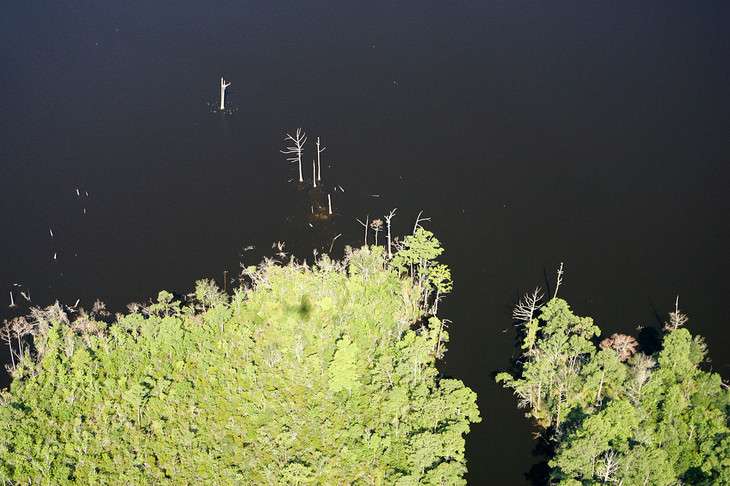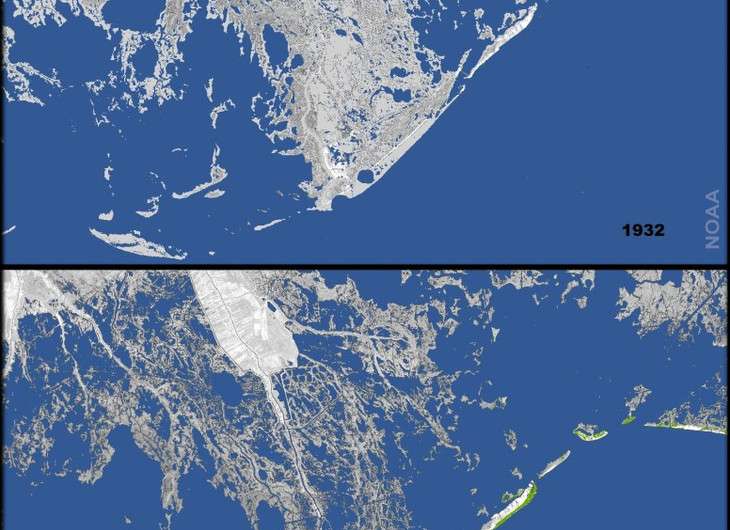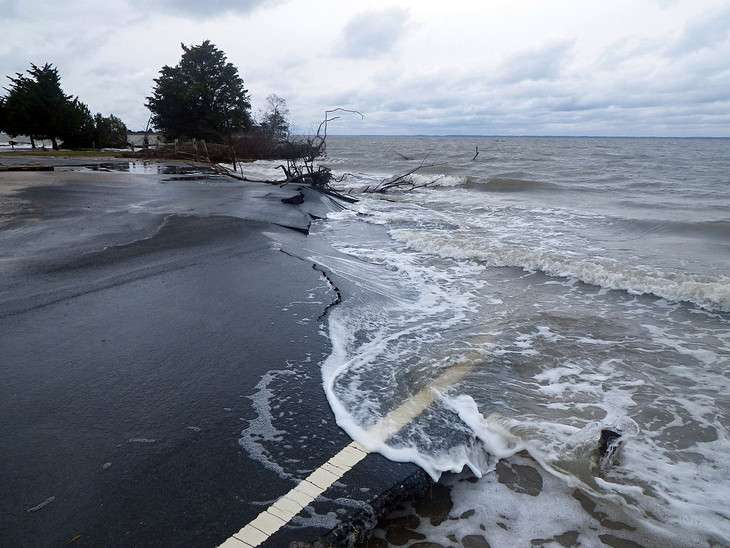For coastal towns to prepare for deadly storm surges, they must accept that disasters can happen

Inch by inch, the sea is moving up the beach.
We've seen the images of disappearing glaciers and morose polar bears on their shrinking floes. Climate change is melting the world's ice, and sea levels are on the rise. Homes, businesses, roads, power lines, anything close to the shore will be in danger.
Those who live near a coast know this. If they've lived there long enough, they can see it out their own windows.
The sea is moving up the beach, and storms are coming.
But a funny thing happens on the way to the future. Most people don't think the catastrophes will happen to them.
Rose-colored glasses
"It's called optimism bias," says Penn State geographer Brent Yarnal. "People tend to be very optimistic about the familiar."
This is not a matter of doubting climate change or the predictions of rising seas. Research in his lab has shown that even people who are very concerned about climate change tend to be more worried about faraway places like low-lying island nations than about their own back yards.
"It's 'We'll be fine, things aren't going to be as bad here, and if we do have problems, we'll be able to handle it. But those poor people over there…' "

While that empathy is admirable, Yarnal says, "it also means that people are usually less willing to take action to adapt in their home area."
For the past several years, Yarnal and his students have been investigating how people in Sarasota County, on Florida's Gulf Coast, perceive the climate-related risks facing them.
"Florida is Ground Zero," he says. "Sea-level rise is going to affect Florida the most, of any place in the nation. It could become a huge problem. It really could overwhelm our financial capabilities as a nation."
He's less concerned with the rising sea level itself, which communities can adjust to over decades, than with the possibility of massive hurricane-driven storm surges that could wipe out whole neighborhoods within a few hours.
"The extreme events are what really kill people, destroy infrastructure, and are the bigger danger," he says. "That's what I worry about."
Storm surge, the inland push of water from the sea, is especially destructive when a storm's landfall coincides with high tide. Based on wind speed, Hurricane Sandy was just a Category 1 storm when it hit the Northeast coast in October 2012, but because of the distance it traveled over the ocean (where it generated huge waves) and the fact that it struck at high tide, it produced a storm surge 13 feet high. The surge killed 117 people and caused an estimated $65 billion damage to property.

Storms in Sarasota
Sarasota's own storm history plays into residents' optimism bias, says Yarnal. The last time the area suffered a direct hit from a major storm was in 1944, when the Category 3 Pinar del Rio hurricane killed nine. A comparable storm today would likely inflict many more casualties: The population of the county has grown from about 19,000 then to about 400,000 today, largely through immigration of retirees from points north.
"The majority of those people are elderly," says Yarnal. "They're becoming less able, mentally and physically, to deal with emergency situations. And probably more important, most of them don't have any experience with hurricanes."
He and his students are working on ways to improve residents' perception of their risk, so the community can better prepare for major storms. They've developed interactive maps that let people see how far inland the normal tides will come with varying amounts of sea-level rise, and how far into town a storm surge will travel and how deep it will be with storms of varying strength. One scenario, with the near-4-foot rise in sea level possible for the area by the end of the century, showed that storm surges will cause about a full category more damage than they do now. That is, a Category 2 hurricane will deliver what today is a Category 3-level storm surge, and on up the scale.
Yarnal and his group have met with community leaders, businesspeople, and residents to discuss the maps. A few years earlier, in an effort to prevent urban sprawl, city planners had set a "growth boundary" that calls for almost all businesses and major infrastructure to stay within a few miles of the coast. The maps show that the boundary closely coincides with the predicted surge zone.
"That was a real game-changer," Yarnal says. "The local economy, the local tax base, access to hospitals, potable water, all of those things are tremendously at risk—and the risk is growing over time. It really made them think about changing their 2050 plan."
They've made one change already—they've revised the plans for a new lift station, which moves sewage to a treatment plant, to ensure it will still function in the event of a big storm surge. That's promising, says Yarnal, who has a house in Sarasota himself. He and his wife plan to retire there, and his daughter and grandkids have already moved to Florida.
Yarnal, upbeat and optimistic by nature, is realistic about the risks of living in a place where disaster is just one big storm away. Climate models can't tell us yet whether Atlantic hurricanes will become more frequent, but we do know they will probably become more intense.
"We might have fewer hurricanes," he says, "but they might all be Hurricane Andrews."
Andrew hit south Florida in August 1992, destroying 63,000 homes and 70,000 acres of Everglades trees. Yet it was not a bad year for hurricanes: There were only six tropical storms in the Atlantic that year, and only two of those were prominent enough to be named.
"There were only two," says Yarnal. "One was Andrew, Category 5, and it hit our mainland.
"You only need one Andrew in a season to ruin your whole day."
Provided by Pennsylvania State University




















